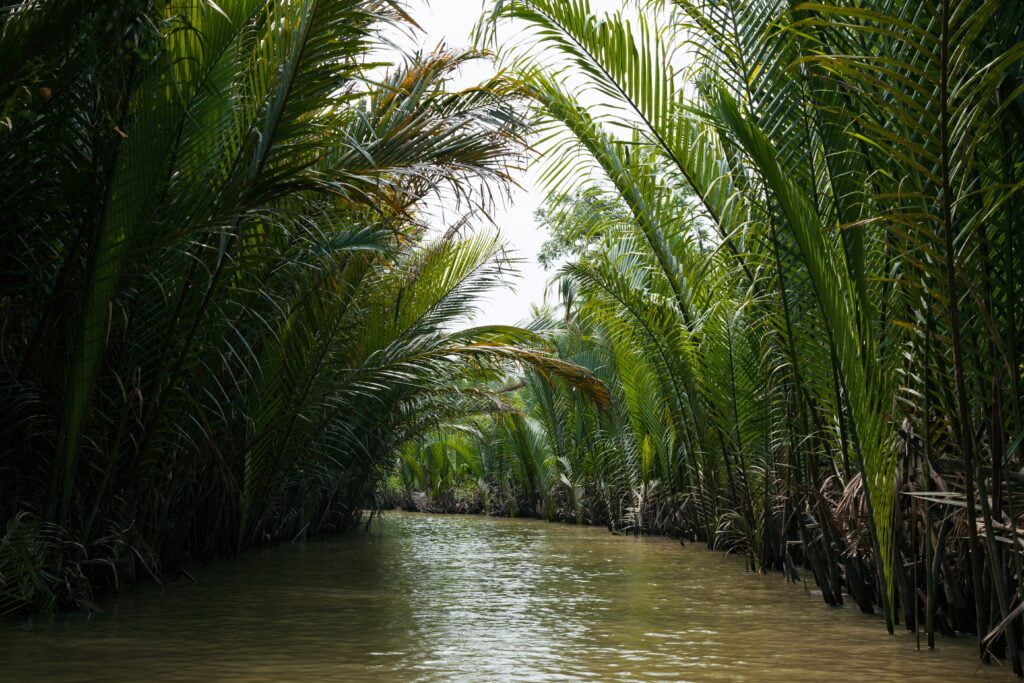The growing presumptions about the third World War over water don’t seem like a distant reality. We all know despite the fact that our planet is covered with 70 percent of water, the amount of usable water, i.e. freshwater is only 2.5 percent.
With the ever-increasing scarcity of water globally and depleting freshwater resources, nations’ are exercising even more extensive control over rivers and resources nowadays.
In this article, we will talk about one such nation and how its vision of becoming a global power neglects all the notions of a rule-based order governing global resources and their equitable distribution.

Picture Credits@ Steve Dimatteo
Before, that let us discuss, what are the unique characteristics that make a hegemon? I will give some examples, and you have to guess the country.
And the hints are, “opaqueness towards the origins of Covid-19 pandemic, flexing of muscles in the South China Sea, incursions into the border with India, curbing democracy in Hong Kong, escalation of tensions with Taiwan”.
However, the world is now aware of the many misadventures of this nation in the last few years. And you have guessed it right! It’s none other than the Peoples Republic of China.

Picture Credit@ Anastasia Taioglo
But, although these misadventures are more or less in the news, one extremely critical aspect of the Asian giant’s power that can cause misery to millions of people is often overlooked. That is– the emergence of China as the ‘Water Hegemon’ in an already water-stressed Asian continent.
China – the Land of Rivers
Many rivers have their origins in China, including 7 of South Asia’s largest rivers – Ganga, Brahmaputra, Indus, Salween, Irrawaddy, Mekong, and Yangtze. They flow into as many as 18 countries, making China the upstream riparian country.
They flow into India, Pakistan, Bangladesh, Myanmar, Vietnam, and Laos, making it the largest river run-off from a single location.
So precisely, what are riparian rights? Riparian rights in local parlance mean special rights for people who own land that runs into a water bank.

Generally, Riparian rights find their mention in property law doctrine. The riparian right is usufructuary, meaning that the landowner does not own the water itself but instead enjoys a right to use the water and its surface.
Thus, in the same context, rivers, which flow beyond man-made boundaries, are a natural resource and access to all nations for their usage. The country of origin where the river originates is an upper riparian state. The river drains or passes through is a lower riparian country.
In the international law regime, all the riparian states have equal rights to share the resources and have mechanisms for dispute resolution.

Picture Credits@ Rowan Heuvel
The mischief lies in Dam Construction.
While having many rivers originating in the region doesn’t cause a significant issue per se, the excessive construction of dams is concerning the countries neighbouring China.
China is the most aggressive dam builder in the world. It has been estimated that it has constructed a whopping 87,000+ dams on various rivers, including the Three Gorges Dam – the largest dam in the world. Presently, China has a more significant number of large dams than the other large dams in the world combined.
This over-exploitation of rivers for dam construction adversely impacts the river course causing environmental degradation and can result in floods and displacements of thousands of people living in the downstream regions.

Picture Credits@ Ashwini Chaudhary
Lalho hydro-power project on River Brahmaputra is a prime example of China’s unquenchable thirst to meet its energy requirements. The Lalho dam is now blocking the flow of River Xiabuqu, a tributary of River Brahmaputra in Tibet. But China is not stopping here. It has plans to create more dams in the future.
It is now planning to build a mega-dam on River Yarlung Zangbao, the world’s highest river. It flows through Tibet and eventually becomes River Brahmaputra when it enters Indian territory.
Precise technical details of this dam are not public yet. Still, regional media reports in China indicate that this new dam will dwarf the Three Gorges Dam on River Yangtze – the largest dam in the world. It will potentially produce 3 times the energy produced by the Three Gorges Dam.

Picture Credits@ Dong Zhang
Implications of Aggressive Dam Building-Possibility of a ‘Water War’ with India & Bangladesh?
The main rivers in India – Indus, Ganga, and Brahmaputra – originate in China. River Brahmaputra is also the mainstay of Bangladesh.
Therefore, as an upper riparian country, China has an advantageous position. It can construct infrastructure and thereby control the flow of water into the two lower riparian countries.
While India and Bangladesh have agreed to a water treaty, their position as lower riparian nations is disadvantageous comparatively. Moreover, the absence of either a bilateral or multilateral water treaty with China risks violating the water rights of the two countries.

Picture Credits@ Rohan Reddy
And the current plan to build a dam on River Yarlung Zangbao can be the potential spark that threatens a conflict as China is moving ahead with its plans without discussing or formulating water-sharing agreements with the two downstream countries.
Consequences for India and Bangladesh- The river water disputes
Bangladesh and India’s entire North East region rely on River Brahmaputra for agriculture. Therefore, these two countries worry that the dams can give Beijing the potential to store or divert water in times of crisis.
Hence, the control over water flow can give China the ability to destroy agriculture and choke off the food supply to its two neighbours.

Picture Credits@ Lajim Ub
Also, the region is a hazard-prone area as it’s tectonically active and has a history of landslides and avalanches. Therefore, if an accident occurs and the dam bursts, it would wreak the downstream countries.
Moreover, China can sabotage these transboundary rivers by polluting them, rendering the water unfit for human usage. Such an occurrence has already been experienced in Arunachal Pradesh.
The River Siang, which joins rivers Lohit and Dibang to eventually form the Brahmaputra turned muddy and blackened in 2017, making it unfit for human consumption.

Picture Credits@ Mayur More
This severely affected the sustenance of agriculture in Siang valley, known as one of the rice bowls of Arunachal Pradesh, and also negatively impacted fishing.
Surprisingly, although China stated that it may have been caused by an earthquake, the river water blackened even before the quake struck!
Instances of Conflicts over Water
In 2002, India and China signed an agreement to share hydrological data of River Brahmaputra to improve transparency and cooperation. However, China discontinued sharing data for almost a year after the two countries were locked in the Doklam Crisis, rendering India unable to monitor floods in the North East.

The Peoples Republic of China claimed that its hydrological stations were under maintenance. However, various reports revealed that Bangladesh was still receiving hydrological data from China.
India’s fears have been hardened further by the events of June 2020. Satellite imagery showed that in the aftermath of the violent clashes on the border, Chinese bulldozers blocked the flow of River Galway, a tributary of River Indus originating in Aksai Chin, thereby preventing it from flowing into India.
Thus violating water laws and using rivers as a weapon to force negotiations.
Threat to Southeast Asia and its Water resources
India, Bangladesh, and other Southeast Asia are also concerned because of China’s lack of consultations with the downstream neighbours.
The major potential hotspot here is the Mekong River. It originates in Tibet and flows into Myanmar, Cambodia, Laos, Thailand, and Vietnam.

It is one of the most fertile rivers globally and provides livelihood opportunities to over 60 million people. Therefore, these countries are also known as ‘Rice Bowls’ of Southeast Asia.
China has built 11 mega-dams on River Mekong, giving it the ability to control water flow into the downstream countries.
Thailand’s Worst Drought in 40 Years
A report published by Stimson Center revealed that in 2019, even though the upstream Mekong in China received extremely high levels of rainfall, China blocked the water in its dams, resulting in the downstream countries facing an unprecedented drought.
China tried to convince the world that the drought was due to low rainfall. However, satellite imagery showed that the lack of water in the lower Mekong was mainly due to blockage by dams in China.

The blockage triggered a drought in Thailand which it had never experienced in over 40 years. It severely affected agricultural production in Thailand. It also caused the water levels in Laos and Cambodia to hit a record low.
Some experts also believe that China is leveraging its upstream position to win concessions from the downstream countries in Southeast Asia on contentious issues, including its Belt and Road Initiative.
Mechanisms for Cooperation
An existing mechanism for international dialogue on the water is spearheaded by UN-Water – a platform uniting the agencies of the United Nations and various governments. Its UN-Water Course Convention of 2014 codifies principles of transboundary cooperation, equitable water utilization, and pollution prevention.
However, China has not joined this convention, representing a blow to the agency’s efforts.
But, China has taken an active stance in regional water dialogues. For example, under the Mekong River Commission, which facilitates diplomacy between the Mekong countries, China shares its river data, although only during the wet season.

Interestingly, to dominate the discussions on water issues, it has built a new information-sharing platform – the Lancang-Mekong Cooperation – a regional association with the Chinese leadership.
Therefore, considering the absence of a multilateral treaty on transboundary rivers and China’s blatant refusal to accept international dispute settlement, very few diplomatic solutions are available to the downstream countries.
Road Ahead for India
Since both China and India are two of the fastest-growing economies, river water exploitation by them will only increase in the future.
Paradoxically, the road ahead for India to mitigate the risks of a Water War with China is through cooperation on water sharing.
Suppose the two countries can build cooperative institutions for data sharing and monitoring. In that case, it can provide better management of transboundary rivers in South Asia.

Furthermore, India can consider forming a counter-coalition of nations and forge an institutional set-up for better management of transboundary rivers.
This can offer greater bargaining leverage over China and promote best practices for water management. It can also explore the possibility of economic sanctions for upstream violations.
Conclusion
As Asia is one of the driest continents in the world and water is becoming a critical resource, China’s water hegemony has become a matter of concern, impacting countries’ national security.
Therefore, the downstream countries of South and Southeast Asia will now have to learn to collectively bargain with China to secure their water sovereignty. Its time for collective efforts and pledge to comply with the rule-based international order that ensures equal treatment of all nations.

China has to understand that such rampant constructions and using rivers as a source of the bargain will prove disastrous for China itself in the long run.
It’s time we learn our lessons from the Covid pandemic, which is that toying with nature can have its own rampant implications, unleashing a catastrophe soon.
Read more about underwater natural resources and sea bed mining here!
About the Author:
Ayush Gala

Apart from being a percussionist and a cricket enthusiast, it’s the unfolding tumultuous events of Geopolitics and International Relations that give Ayush the adrenaline rush he craves for. So naturally, he is pursuing his Master of Arts in International Relations and Strategic Studies from the University of Mumbai. He also loves to analyse and discuss the socio-political issues in India. He has a burning desire to make the citizens of India more aware and informative on various matters concerning them.






